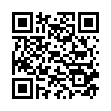|
This article is cited in 5 scientific papers (total in 5 papers)
A Notable Relation between $N$-Qubit and $2^{N-1}$-Qubit Pauli Groups via Binary $\mathrm{LGr}(N,2N)$
Frédéric Holwecka, Metod Sanigab, Péter Lévayc
a Laboratoire IRTES/M3M, Université de technologie de Belfort-Montbéliard, F-90010 Belfort, France
b Astronomical Institute, Slovak Academy of Sciences,
SK-05960 Tatranská Lomnica, Slovak Republic
c Department of Theoretical Physics, Institute of Physics, Budapest University of Technology and Economics, Budafoki út. 8, H-1521, Budapest, Hungary
Abstract:
Employing the fact that the geometry of the $N$-qubit ($N \geq 2$) Pauli group is embodied in the structure of the symplectic polar space $\mathcal{W}(2N-1,2)$ and using properties of the Lagrangian Grassmannian $\mathrm{LGr}(N,2N)$ defined over the smallest Galois field, it is demonstrated that there exists a bijection between the set of maximum sets of mutually commuting elements of the $N$-qubit Pauli group and a certain subset of elements of the $2^{N-1}$-qubit Pauli group. In order to reveal finer traits of this correspondence, the cases $N=3$ (also addressed recently by Lévay, Planat and Saniga [J. High Energy Phys. 2013 (2013), no. 9, 037, 35 pages]) and $N=4$ are discussed in detail. As an apt application of our findings, we use the stratification of the ambient projective space $\mathrm{PG}(2^N-1,2)$ of the $2^{N-1}$-qubit Pauli group in terms of $G$-orbits, where $G \equiv \mathrm{SL}(2,2)\times \mathrm{SL}(2,2)\times\cdots\times \mathrm{SL}(2,2)\rtimes S_N$, to decompose $\underline{\pi}(\mathrm{LGr}(N,2N))$ into non-equivalent orbits. This leads to a partition of $\mathrm{LGr}(N,2N)$ into distinguished classes that can be labeled by elements of the above-mentioned Pauli groups.
Keywords:
multi-qubit Pauli groups; symplectic polar spaces $\mathcal{W}(2N-1,2)$; Lagrangian Grassmannians $\mathrm{LGr}(N,2N)$ over the smallest Galois field.
Received: November 14, 2013; in final form April 2, 2014; Published online April 8, 2014
Citation:
Frédéric Holweck, Metod Saniga, Péter Lévay, “A Notable Relation between $N$-Qubit and $2^{N-1}$-Qubit Pauli Groups via Binary $\mathrm{LGr}(N,2N)$”, SIGMA, 10 (2014), 041, 16 pp.
Linking options:
https://www.mathnet.ru/eng/sigma906 https://www.mathnet.ru/eng/sigma/v10/p41
|

| Statistics & downloads: |
| Abstract page: | 282 | | Full-text PDF : | 48 | | References: | 65 |
|




 Contact us:
Contact us: Terms of Use
Terms of Use
 Registration to the website
Registration to the website Logotypes
Logotypes








 Citation in format
Citation in format 
